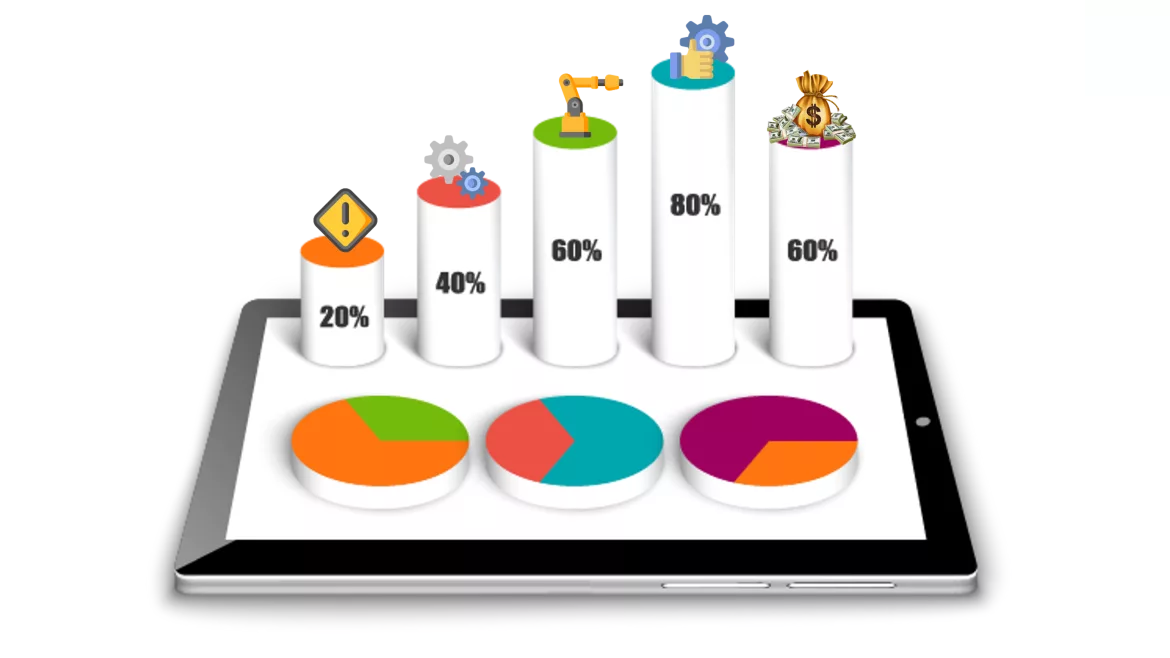Maintenance trends
Computerized maintenance in 2022
Whether considering adopting CMMS this year or curious about what to expect from current products, here's a look at some of the technology’s advances

Computerized maintenance management systems (CMMS) have come a long way in the last several years. 2022 holds advancements to help maintenance teams get even more benefit from the software.
Whether considering adopting CMMS this year or curious about what to expect from current products, here's a look at some of the advances Eagle Technology Inc. expects to see in 2022.
Future of CMMS
CMMS adoption continues to increase as maintenance teams look for ways to improve preventative maintenance and maximize their resources. Here’s a look at some key industry statistics to help set the stage for what you’ll see in 2022.
- 39% of maintenance managers are using CMMS, while 28% are using spreadsheets and 21% are still using pen and paper. Another 12% have no system.
- 34% of facilities spend more than 30 hours per week scheduling maintenance. That’s nearly a full-time position. The average time they spend on completing the maintenance is just 19 hours.
- The top challenge facing maintenance teams is hiring and retaining individuals, making careful scheduling and planning of resources essential.
- 74% of CMMS users state that they think the tool improves their productivity.
- As more companies realize the power of preventative maintenance and a tool to manage all aspects of that maintenance, the CMMS market is expected to grow 8.58% year over year from 2020 to 2027.
Trends for CMMS
The industry sees the value of CMMS, and the adoption rates are showing that. So what’s coming next in your CMMS software? Here’s a look at the top 3 trends you can expect in the coming year.
1. CMMS is moving from emerging technology to universal software
Slowly, using a CMMS is becoming the norm. As such, these software systems are no longer emerging technology. With many years to work out kinks and add valuable features to meet the needs of maintenance teams, CMMS is now universal software.
This means that as companies hire new maintenance technicians, they likely know what CMMS is and how to use it. And many new workers might expect that CMMS is in place and feel resistant toward old ways of handling maintenance scheduling, such as pen and paper or spreadsheet management. Attracting the best talent in the industry might mean using the best technology.
2. Big data tools and analytics are essential
Showing the value of CMMS and that it is worth the expense is getting simpler thanks to AI and other analytics tools. Big data is what makes CMMS so powerful. The ability to bring in past maintenance data to inform future maintenance to avoid breakdowns is astounding. And analytics and visualization tools keep improving to make it simpler to showcase the value the software provides.
Some CMMS now includes Power BI natively within the software so you can create visualizations to better understand maintenance needs and show a visual history with the software.
3. Mobile application improvements
Handheld mobile devices have not been as popular in maintenance management as one might think, but part of that is because the software has been challenging to use on these devices until recently.
As mobile devices become an essential part of everyday life, technology is catching up and improving on these devices. Just 8% of maintenance teams were using mobile devices for maintenance tasks in 2020. It was much more common to use them as a way to stay in touch as 23% of teams reported using them in that way. Just 9% used them to schedule and disseminate information to their teams.
A CMMS solution makes it simpler for technicians to stay in touch and learn about their next project without returning to the main office. It is one more way to get added efficiency from the software.
Looking for a reprint of this article?
From high-res PDFs to custom plaques, order your copy today!







